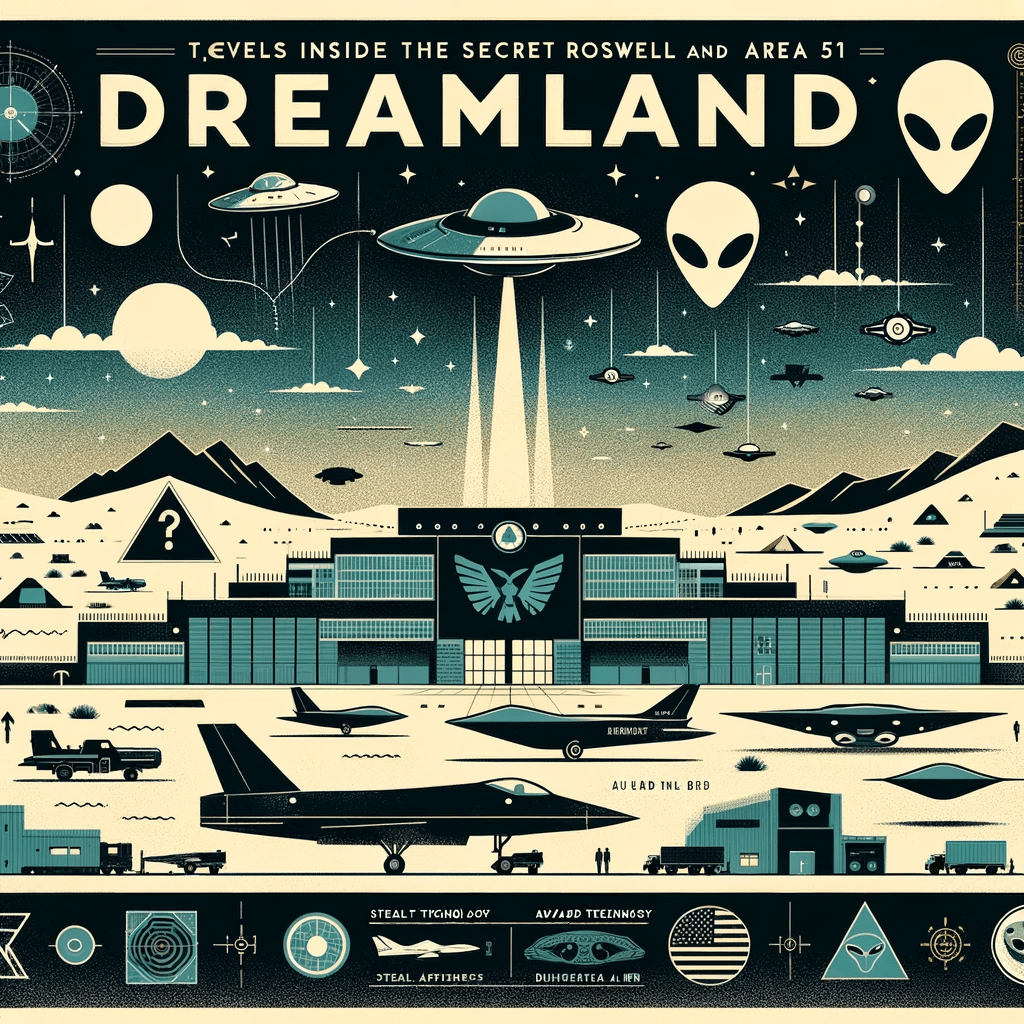Dreamland: Travels Inside the Secret World of Roswell and Area 51

Phil Patton’s Dreamland: Travels Inside the Secret World of Roswell and Area 51 is a meticulously researched exploration of the myths, realities, and cultural impact of two of the most secretive locations in American history. Through a blend of historical analysis and cultural commentary, Patton looks into the world of Area 51 and Roswell, dissecting the narratives that have emerged about these sites over the years. Unlike sensationalist takes, Patton approaches the subject with a journalist’s curiosity, striving to uncover the balance between truth and speculation.
The book is not a confirmation of extraterrestrial encounters or UFO crashes but an investigation into the phenomena that have fed these enduring beliefs. Patton highlights how secrecy itself is a driving force behind the myths surrounding Area 51. By withholding information, the U.S. government inadvertently created fertile ground for speculation, fostering an environment where conspiracy theories flourished. This secrecy, Patton argues, is both a practical measure to protect national security and a source of mistrust that fuels public fascination with the unknown.
Patton also examines the technological innovations developed within Area 51, focusing on its critical role in advancing military aviation. While acknowledging the lack of transparency about its operations, he presents Area 51 as a hub for projects such as the U-2 and SR-71 Blackbird reconnaissance planes and the F-117 stealth fighter. The emphasis remains on the real-world implications of cutting-edge research conducted under a veil of confidentiality, rather than on extraterrestrial origins.
The book critically addresses the claims of individuals like Bob Lazar, who asserted he worked on alien spacecraft near Area 51 at a facility called S-4. While Lazar’s story is touched upon, Patton contextualizes it as part of the broader cultural fascination with UFO lore rather than a definitive element of Area 51’s history. Lazar’s controversial narrative is portrayed more as an artifact of popular culture than as evidence of the site’s true purpose.
Patton also explores the role of figures such as Ben Rich, the head of Lockheed Martin’s Skunk Works, whose work at Area 51 contributed to advancements in stealth technology. While rumors have swirled about Rich’s involvement in extraterrestrial projects, Patton sticks to the documented achievements of figures like Rich, linking their work to the cutting-edge developments that bolstered U.S. military capabilities during the Cold War.
Throughout the book, Patton juxtaposes the public’s fascination with UFOs and alien encounters against the practical realities of the military-industrial complex. His narrative is steeped in the history of Cold War-era paranoia and the technological arms race, framing Area 51 as a symbol of American ingenuity cloaked in mystery.
Ultimately, Dreamland is less about extraterrestrial contact and more about how secrecy, myth-making, and cultural anxieties intersect to create a compelling narrative. Patton’s work does not confirm the wilder theories about Area 51 but instead provides a thought-provoking commentary on how and why these theories exist, all while grounding the discussion in the site’s tangible contributions to military history.

